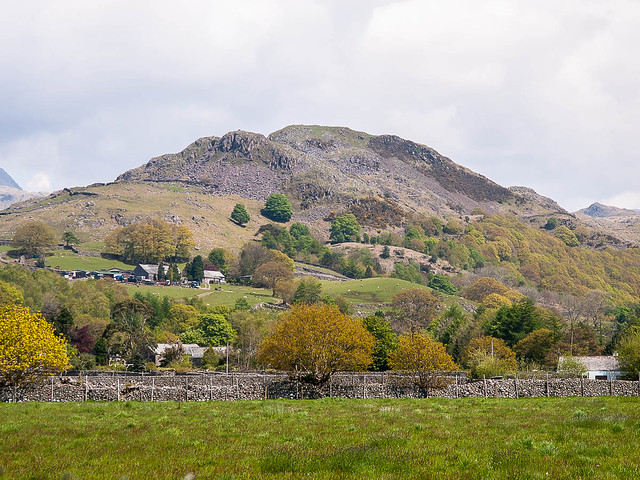The practical side of this project is to take three photos of the title of this post “Man-made landscapes”. Having just read Andrews’ Landscape and Western Art I’m tempted to ask “What landscape isn’t man-made”? Even the most innocuous and unprepossessing bit of land is just that – land – until someone asserts ownership, or ascribes cultural value to it, or claims it as a great view or simply puts the boundaries of a photo frame around it – at which point it becomes landscape. Landscape is inherently man-made and so the practical part of the project becomes simple – I can point my camera anywhere, make a photo and it’s Landscape – and by implication man-made.
A thought has just struck me – that might be a reading of some of Billingham’s more puzzling Landscapes. Before he photographed them they were just land – his action has changed their status. Not sure where that thought process will take me yet, so back to the original…
There is a second and more challenging part to the exercise. I’m not simply required to capture a shot of a “man-made landscape” I have to decide what I want to say with it in advance. I took the following three photos on a day trip up Eskdale. before I set off I had already concluded that it would be a good opportunity to shoot for this project, and I had a broad idea in mind to make a point that nearly all British landscape is man-made (in the lay sense rather than the art theory sense) and perhaps to provide a counter-point to the prevalent view that all development is bad. First up is this shot towards Boot from the platform at Dalegarth:

This is, give or take a couple of fences, unspoiled country side as presented in tourist brochures, and yet, except for the bare bones of the rocks, it is almost entirely the result of continuing human intervention. The tree were probably cleared from the lower fells by bronze age farmers, and the descendants of their sheep have kept them tree-free since, the woodland is quite possibly the unmanaged relic of woodland managed for centuries as coppice to provide charcoal and timber, the dry stones walls and pastures were initially developed by the Vikings, even the grassland itself is improved. Somewhere in this valley around 100,000 tonnes of iron ore were extracted – and apparently there are still Roman slag heaps if you know what you’re looking at.
The difficulty with all this is that to the uninformed eye none of this is readily apparent – perhaps it needs a title such as “5000 years of human development” to emphasise the point – I’m not really sure.
Next up was this one, which in the context of the first image I simply meant as a reminder that the planet, and the countryside itself, will outlast our impact by some considerable measure. The rock of the hills in the background is 450million years old – give or take.

And final image, which struck me as appropriate to this narrative and was too good an opportunity to turn down. I love the way this glove appears to be re-assimilating into the rock emphasising the idea that the planet will deal with the things that we throw at it. Whether we will is another question.

No comments:
Post a Comment